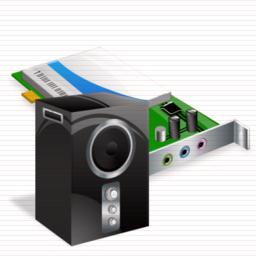Now computer sound cards have become a familiar component in computing systems. Many new users do not even imagine what could be otherwise.
But after all, just about a dozen and a half years ago, every computer owner who wanted to hear in programs not the sound of a system speaker, but real sound (and even people's voices in multimedia applications!), Was forced to buy an audio adapter. Moreover, sound cards required the study of the principle of tuning DMA channels and interrupts, selection in accordance with the bus, prescribing parameters in files. In addition, the first models were quite expensive. As a result, sound cards were installed only by enthusiasts. What is the situation now?
Constructive decisions
All existing sound cards can be divided into three main types:
- Discrete models. Perhaps they can be called classic. Such a card is a relatively small printed circuit board with electronic components placed on it and a group of sliding contacts for connecting to the connector on the corresponding bus of the motherboard. Since they are installed in the system unit, they are sometimes called internal;
- Embedded (onboard, integrated). A similar model is a microchip soldered to the motherboard and several auxiliary strapping elements, which performs all the basic functions of a classic sound card;
- External Most often, devices are connected to USB ports.
Features of embedded solutions
Very often, people who are only remotely confronted with the nuances of computer sound have a logical question about the practical differences between audio cards. After all, nevertheless, the features of the design are not the main significant difference. The least expensive solutions are represented by integrated cards. The real cost of a sound chip is from $ 1 to $ 10 (for comparison: the youngest in the line of discrete Asus Xonar sound card is offered by the manufacturer for almost $ 40). In addition, connoisseurs of quality sound know that due to the dense arrangement of components on the motherboard, mutual electrical interference will inevitably occur, affecting the “purity” of playback. Although this can be solved by abandoning the analog output in favor of a digital one, the latter is not practical to use with similar inexpensive cards.

And finally, it must be remembered that most of the flow processing operations are performed by the driver for the sound card using the power of the
central processor. Thus, the built-in card is an excellent solution for a person who does not want to spend money on buying a separate audio adapter, and also does not consider himself a true music lover.
The nuances of discrete models
Currently, the most relevant solutions designed for the PCI-Express bus. Such cards, even of average cost, already contain on board a full-fledged specialized processor that performs data flow processing, offloading the central one. Often discrete models have much more features (for example, ASIO support) than built-in counterparts. Sound quality, as a rule, is significantly higher than that of onboard solutions. When choosing, you should remember that any additional card inside the case impairs air circulation, potentially disrupting heat transfer. In addition, power consumption is higher than that of built-in cards.
External sound cards
These devices can be divided into two groups: cheap, in fact, representing the same chip as in onboard solutions, but "sitting" on the USB bus; as well as high-end professional cards.